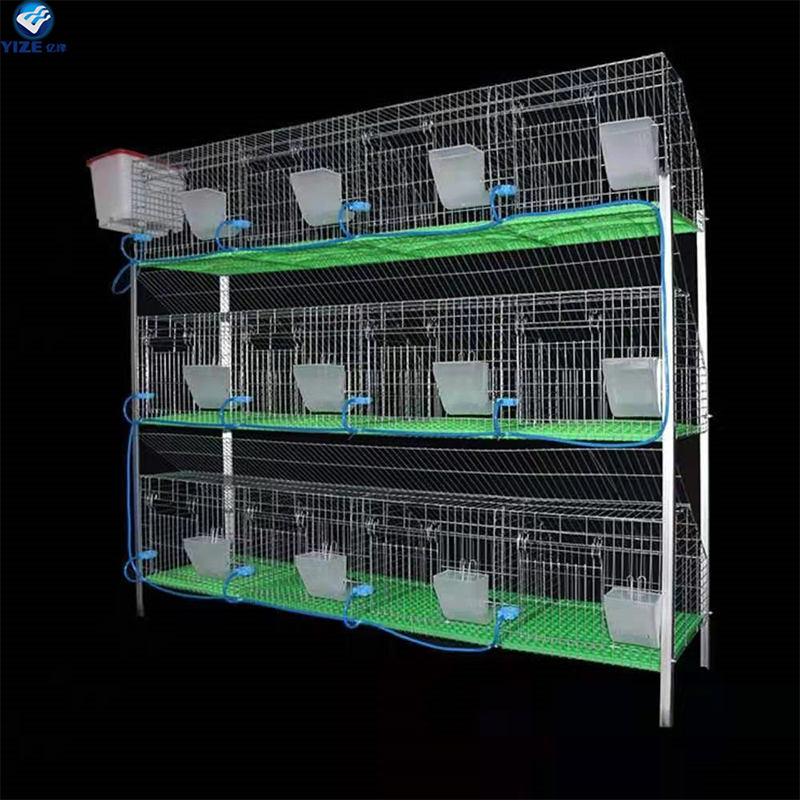Exploring Innovative Designs and Benefits of Modern Poultry Cages for Sustainable Farming Practices
Jul . 28, 2024 10:12 Back to list
Exploring Innovative Designs and Benefits of Modern Poultry Cages for Sustainable Farming Practices
The Importance of Poultry Cages in Modern Farming
In recent years, the poultry industry has witnessed significant transformations, primarily driven by increasing global demand for chicken meat and eggs. This surge in demand has necessitated the adoption of more efficient farming practices, one of which is the utilization of poultry cages. These structures play a vital role in enhancing the productivity and welfare of poultry, while also addressing several challenges faced by traditional farming methods.
Poultry cages, specifically designed for raising chickens, ducks, and other fowl, have gained popularity for several reasons. First and foremost, they allow for more efficient space utilization. In traditional free-range systems, birds require extensive outdoor space, which can lead to overcrowding and increased competition for resources like food and water. Cages enable farmers to optimize their production space, ensuring that each bird has access to necessary resources without the fight for survival that often characterizes traditional systems.
Another significant advantage of using poultry cages is the enhancement of biosecurity. In traditional farming operations, where birds roam free, the risk of disease outbreaks can be considerably higher. Poultry cages limit birds' exposure to pathogens from the environment, wild birds, and other animals. This containment helps prevent the spread of diseases like avian influenza and Newcastle disease, protecting not only the poultry but also the livelihoods of farmers. Effective biosecurity measures can lead to healthier flocks and reduced reliance on antibiotics, which is increasingly important in light of global initiatives to curb antibiotic resistance.
poultry cages

Poultry cages also facilitate better management of bird welfare. In modern cage systems, particularly those designed with the welfare of the birds in mind, features such as enriched environments—complete with nesting areas, perches, and room for social interaction—can promote better physical and mental health for the birds. Such systems have been shown to reduce stress and aggression among birds, leading to improved overall well-being. However, it is essential for producers to adhere to welfare standards, ensuring that the environments provided meet the birds' behavioral and psychological needs.
Moreover, the use of poultry cages can lead to improvements in feed efficiency and egg production rates. Caged birds are generally easier to manage and monitor, allowing farmers to provide tailored nutrition that maximizes growth and production. Studies have shown that hens kept in cage systems often lay more eggs compared to their free-range counterparts. This increase in productivity can significantly enhance a farm's profitability while concurrently meeting the rising consumer demand for poultry products.
Despite the advantages, the use of poultry cages is not without controversy. Animal rights advocates often raise ethical concerns regarding the confinement of birds and the potential psychological impact it may have on their welfare. As a result, many poultry farmers are exploring alternatives, such as free-range or cage-free systems, that align better with consumer preferences. The challenge for the industry lies in balancing productivity with animal welfare while responding to a market that increasingly values ethical farming practices.
In conclusion, poultry cages represent a crucial element of modern poultry farming. They provide numerous benefits, including efficient space utilization, enhanced biosecurity, improved bird welfare, and increased productivity. However, it is essential for the industry to continue evolving and adopting practices that prioritize both animal welfare and consumer expectations. Through responsible farming practices and ongoing innovation, the poultry industry can thrive in a manner that respects the animals while fulfilling the nutritional needs of the global population.
-
Hot Sale 24 & 18 Door Rabbit Cages - Premium Breeding Solutions
NewsJul.25,2025
-
Automatic Feeding Line System Pan Feeder Nipple Drinker - Anping County Yize Metal Products Co., Ltd.
NewsJul.21,2025
-
Automatic Feeding Line System Pan Feeder Nipple Drinker - Anping County Yize Metal Products Co., Ltd.
NewsJul.21,2025
-
Automatic Feeding Line System - Anping Yize | Precision & Nipple
NewsJul.21,2025
-
Automatic Feeding Line System - Anping Yize | Precision & Nipple
NewsJul.21,2025
-
Automatic Feeding Line System-Anping County Yize Metal Products Co., Ltd.|Efficient Feed Distribution&Customized Animal Farming Solutions
NewsJul.21,2025






